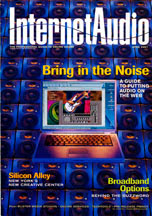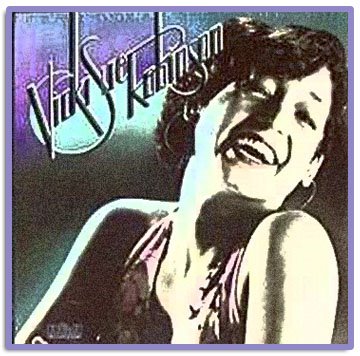
In Mix Magazine's Internet Audio supplement (April 2001), editor
Sarah Jones asks the question, "Who is the new web audio professional?" She then goes on to take a stab at the answer and writes:
"Creating audio for the Internet requires a unique blend of skills, combining audio savvy, design creativity and programming knowledge. Audio professionals are learning about HTML and Flash. Web designers and computer professionals are learning about compression and sampling rates. Today's production team, like this month's featured creative talent at Blister Media, might be writing both a MIDI sequence and HTML code as part of a client project. Is this jack of all trades the new breed of creative professional?"
The feature story that followed that introduction was in depth interview of my partner and I about the practices we employed, sometimes invented, often combined and then championed as a new breed of sonic artisan that would be both music designer and creative technologist.
Here's the article:
BLISTER MEDIA
Interactive Composition Comes of Age
By
Andrea Rotondo Hospidor
Terry O’Gara and Michael Sweet, owners of Manhattan-based Blister Media, are true musicians and creative collaborators. They speak the language of MIDI, sequencing and recording, but they also speak Java, Flash Shockwave, Beatnik, MP3 and RealAudio. The upshot is, Blister Media may just portend the future for all music production professionals.
The company is currently blazing trails as one of the few music houses that composes music–and creates code–for interactive media, and we're not just talking TV commercials, CD-ROMS and on-site installations; we're talking about composing music for the Internet. Recent projects include several sync-to-broadcast gigs, such as History Channel's History IQ game and MTV's WebRIOT. (Sync-to-broadcast synchronizes online content with on-air broadcasts, turning a TV show into an interactive experience.) Blister Media is also responsible for the new sonic identity of HBO Zone, music for Shockwave's BLiX and Loop games, music and sound design for the NASDAQ site in Times Square and a connection tone for a telephone company.
So, if you're a composer who presumes Beatnik has something to do with a Jack Kerouac novel, you'd do well to take note. The future of music composition ain't what it used to be.
MUSIC
Music, Noise, Code. That's the Blister tagline. According to O'Gara, "That translates to: original music, sound design and audio-specific programming as applicable for interactive media–including enhanced or interactive TV, special venues and electronic games–TV and radio commercials, broadcast promotions, phone connection tones, etc." To paraphrase David Byrne, how did they get here?
Both men grew up with a musical instrument in one hand and a computer keyboard in the other. "I grew up in a relatively artistic family," Recalls O'Gara. "I studied violin, worked as an assistant to the organist at a local church and played in a youth orchestra. I also had the benefit of growing in a family that traveled the world. So as a child I listened to the indigenous music of the Middle East, South America, the West Indies and Europe." But perhaps most significant in O'Gara's early music education was the day his parents bought him a Minimoog. He was 13 and just beginning to dream about the ins and outs of sound synthesis.
Meanwhile, in a sleepy Wisconsin town, Sweet was also growing up with music. It was the early '80's and he was learning to merge the computer world with sound. He went on to study music production and film scoring at Berklee College of Music in Boston.
NOISE
Later, both landed jobs at a well-known music production company in New York City: O’Gara following the production route and Sweet concentrating on composition. "We became creative collaborators from the start," notes O’Gara. "In the beginning, our collaborations were more experimental, explorative and noncommercial. We were mixing orchestral harmonies with world rhythms and hip hop loops. This was 1991. It was until 1996 that the world caught up with us, and our explorations became something people would pay us to create." Soon after, the duo created Blister Media.
"From the very beginning, clients would come to us for new ideas and we'd sell them on the idea of a symphonic piece of music being driven by electronically produced tribal rhythms, for example." O'Gara says.
CODE
As they honed their composition chops on commercials, interactive kiosks, installations and CD-ROMs, O'Gara and Sweet also dove into Flash, Java and Beatnik. It was this intimate knowledge of technology that landed them favor with Shockwave. They have since produced music for two online games: BLiX and Loop. In effect, Blister's tech-speak has allowed them to cross over into a world where programmers and musicians routinely collaborate music for the Web being an extension of that philosophy.
"Creating music for the Web takes sound to places where it can be heard on a very personal level," says Sweet. "When we create music for an interactive experience, the one-to-one relationship to the end-user is much closer than creating something that appeals to a broad audience, such as commercials. IN addition, the collaboration between all of the digital artists is much stronger, because it usually takes several months to finish a project."
NOSTRADAMUS FOR A DAY
O'Gara and Sweet advise composers and engineers to delve into audio for the Web–and interactive media–as soon as possible. Composers and engineers must know compression and delivery formats, and it's not enough to just hand your music off to a programmer. Smart production pros will play the active role in creating code.
O'Gara goes so far to say, "If a composer doesn't understand the technical issues regarding the way audio is delivered, then maybe he's in the wrong business. We'll see more and more of these technologies converge or act in tandem. Sync-to-broadcast is just one example. Our perception of what a composer, engineer or producer is has to change along with the technology. But we must emphasize that it's not just the tools. It's first and foremost what's in your head."
Sweet concurs, "When I first started exploring Beatnik, I had to get in that box and say, "This is what it can do. How can I push the box outward and make it do things that people haven't thought of doing before?" You start thinking, "Oh, I had this idea a long time ago and now here's a way to do it!"
TECHNOLOGY AND ART IN ACTION
How do O'Gara and Sweet really combine technology and composition? It seems to be two parts creative musical intelligence and one part kicking studio setup. The creative team runs off of both the Macintosh and PC platforms and mixes on a Mackie D8B digital console. Sequencing is done via MOTU Digital Performer, Digidesign's Pro Tools and Emagic Logic. Their synth rack is extensive and boasts an E-mu Proteus 2000; Roland JV-2080, MC-303, Juno 106, Super JX; Oberheim Matrix-6R; Minimoog; Waldorf WaveXT; and a Synclavier. They also own a host of software synths, Steinberg Rebirth and Recycle to name two. The E-mu E6400 Ultra and Digidesign's SampleCell handle the sampling chores; Macromedia Director, Flash and Dreamweaver round out their digs.
"It's not just equipment but an extension of our ideas," O'Gara says. "We love an eclectic mix of equipment. The tools, to some extent, define the process and the production method. The idea is that if our studio setup is atypical, then what we create will be atypical in nature as well."
Blister Media recently put their studio sensibilities to the test while creating music for a new Shockwave game called Loop. "Although, on first look, it's a relatively simple game," says Sweet, "it has many different levels, both visually and musically. One of the things that has always excited me about music for games is the ability t create a piece that changes every time you play it. In Loop, we structured the sound around playlists that could change in real time, as well as from play to play, giving the end-user a much richer musical experience."
Another recent project was Passport Kids for Children's Television Workshop. "The theme," Sweet says, "was communication. The site is translated into 10-plus languages, and people from around the world exchange information about themselves. When we were asked to add music to the site, we wanted to let users express themselves though music, so we built a musical sequencer and 'jam machine' that allowed users to create their own 'song' and play to other users. We used Beatnik as our audio engine, because it was a fairly robust music system that allowed us to bring custom world instrument samples and manipulate them in real time. When then wrote a lot of custom code to push Beatnik to its limits. The outer visual shell was then built using Flash that communicated directly with our code for Beatnik.
"When we first start a project, we look at many things," Sweet continues, "including the overall creative feel, interaction design, bandwidth/size and what new things we can do that we've never done before. Experimentation is a very important aspect of what we do, because we don't think the sound is made perfect the first time around. We always ask ourselves, 'How can we make it better? How can we push the boundaries of our current technology limitations?"

